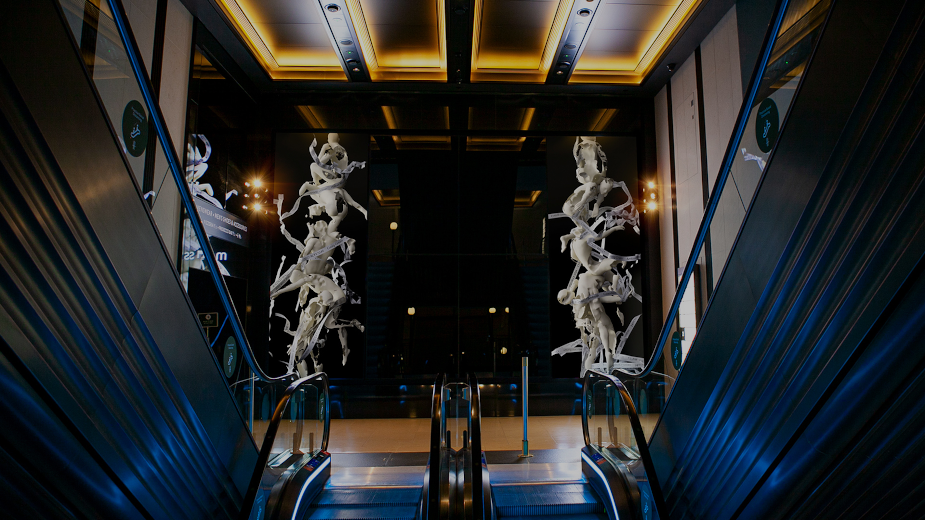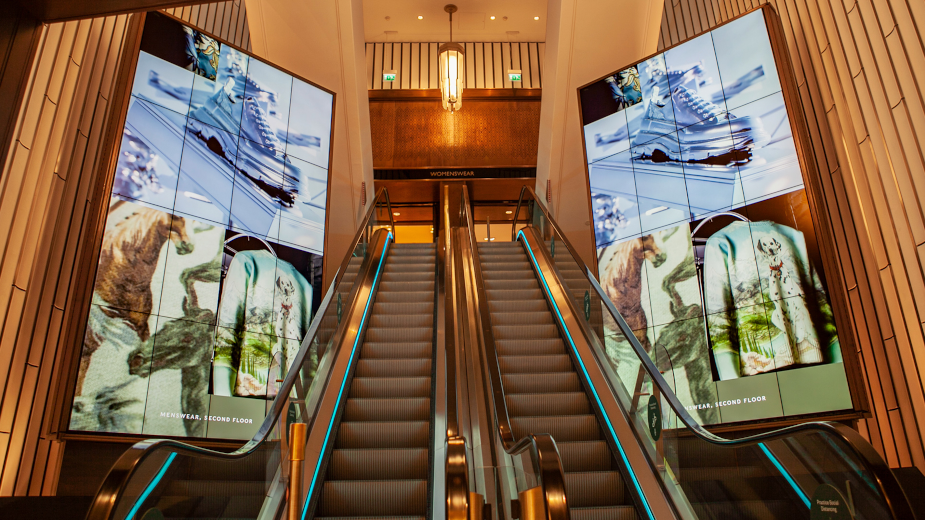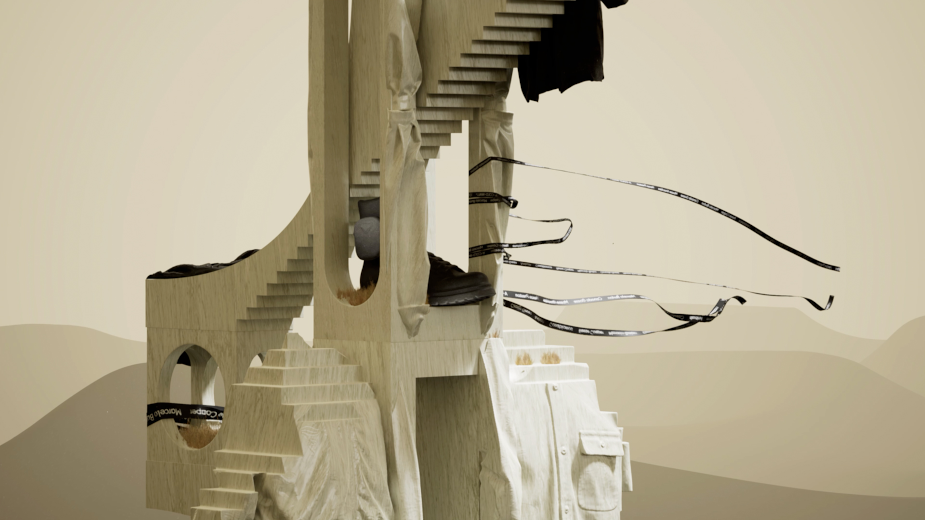
Harrods Gets a Real Time Makeover with Help of Game Engine Technology

The fashion industry has come a long way since Helmut Lang first dropped jaws by using the internet to present a collection in 1998.
From augmented reality catwalk shows at New York Fashion Week to Balenciaga releasing its Fall 2021 collection in the form of a video game, the industry has continued to push boundaries using technology.
Today, the same type of tools behind digital human influencers such as Lil Miquela and Shudu is being used by forward-thinking fashion retailers for stunning marketing campaigns.
One such trailblazer is world-famous department store Harrods. One hundred and twenty years ago, Harrods was a pioneer of fresh ideas when it commissioned one of the world’s earliest escalators. Today, the London landmark is again at the forefront of innovation, adopting brand new production techniques for a visual overhaul of its menswear department.
Thanks to a full 360° campaign conceived and delivered by creative studio DBLG, visitors to Harrods are now presented with real-time-rendered CG versions of the store’s latest menswear lines in ethereal, Dali-esque landscapes.

Thinking outside-the-box
DBLG is an award winning studio that specialises in motion design and brand identity. Harrods approached founder Grant Gilbert about an exciting new project after the studio won SHOWstudios Best Fashion Film Award last year for its experimental fashion film Hidden.
The brief was to help present the exclusive department store as the ultimate menswear destination. It would involve the development of a 360° campaign, including films for a full window and screen takeover in the store.
DBLG found inspiration for the films’ concept right under their feet. “It originally came from the marble checkerboard motif of the newly redeveloped menswear floor,” says Grant. “The textures in the numerous marble patterns reminded us of epic far-stretching landscapes, so we set out to recreate these textures in physical form.”
The task of recreating these textures was immediately beset by challenges, however.
Covid-19 brought new social distancing rules, which meant the team had to find an alternative solution to a physical film shoot. It opted to create the content using real-time 3D creation tool Unreal Engine. “Due to current filming regulations, we weren’t able to film models in the clothes, so we opted to 3D scan them,” says Grant. “This actually worked to our advantage, giving us much more flexibility, as we were able to manipulate and light them within Unreal.”
With Unreal Engine powering production, DBLG was able to leverage superfast real-time rendering workflows to deliver the project in a tight timeframe— despite being fairly new to the technology. “We had a short deadline but needed to create a lot of content in a small amount of time, so Unreal was the perfect tool for the job,” says Grant.
In the end, the studio managed to complete the project in one month.
3D scans of clothes
Harrods’ expectations meant the stakes were high on the project. DBLG knew that the visual quality of its films had to be flawless. Looking to explore all creative avenues thoroughly, Unreal Engine became invaluable for developing the landscapes and lighting, Grant explains. “Seeing these evolve in real time gave us the flexibility to design and explore more options,” he says. “I think the most useful feature of Unreal on this project was its ability to take really heavy assets from other software, from Cinema 4D through to Houdini, and still run fast.”

With real-life filming a no-go, DBLG hired 3D scanning and design studio Form Capture to scan the clothes using an Artec 3D Eva scanner. These scans were then imported into Cinema 4D and Houdini before being animated, textured, and lit within Unreal Engine. “Unreal’s ability to handle these heavy assets was paramount,” says Grant. “Due to the cloth being a key part of the creative concept and filmic nature of the piece, it was extremely important to render using the highest fidelity assets our tech would allow.”
The team turned on ray tracing in most shots to achieve the most accurate lighting possible using an NVIDIA GeForce RTX 2080 Ti graphics card.
Ray tracing is a method of determining the colour of each pixel in a final render by tracing the path of light from the camera as it bounces around a scene, collecting and depositing colour as it goes. Because it mimics the physical behaviour of light, it delivers much more photorealistic results than rasterisation, like soft, detailed shadows and reflections from off-screen objects. In Unreal Engine, it’s possible to achieve these results in real time.
DBLG also used Quixel Megascans for the films—ultra-realistic 3D scans that can be used to enhance the photorealism of CG scenes. “Megascans allowed us to focus on the concepts and creative, and not spend hours building a single extremely complex texture,” says Grant. Quixel Megascans are free to use in all Unreal Engine projects.
Real-time transforms filmmaking
With the global pandemic severely restricting face-to-face contact, real-time technology has provided a lifeline that enables brands to continue putting out marketing content. “In current times, shooting on location or in a studio is problematic,” says Grant. “We need the flexibility to have options and think quickly.”

Like many other filmmakers, DBLG found that real-time technology transforms traditional filmmaking methods. “It completely changes the workflow,” explains Grant. “We no longer have to wait and cross our fingers that the renders have worked. As graphics cards get faster, it will give us so many more options that weren’t available to us before.”
For DBLG, the prospect of combining real-time and live production workflows in the future holds great appeal. “There are so many other Unreal Engine features that we’re yet to try. We can’t wait to start integrating Unreal with live-action shoots—hopefully soon,” says Grant. “This really is a game changer for our industry.”










